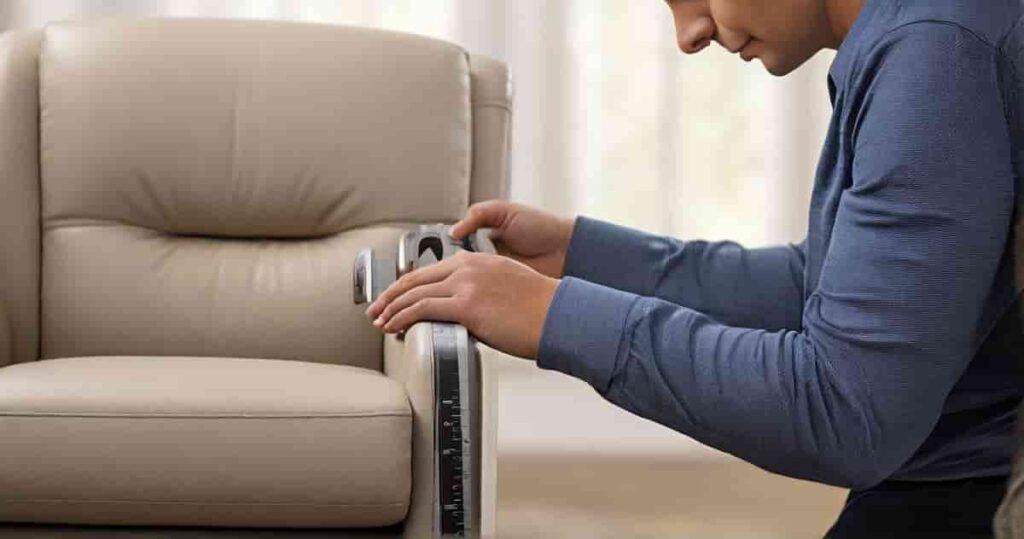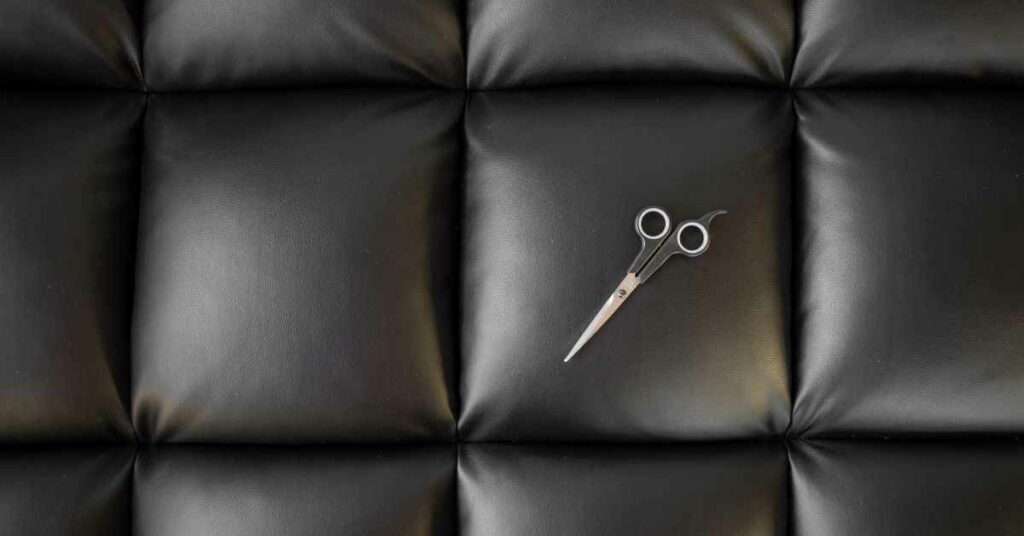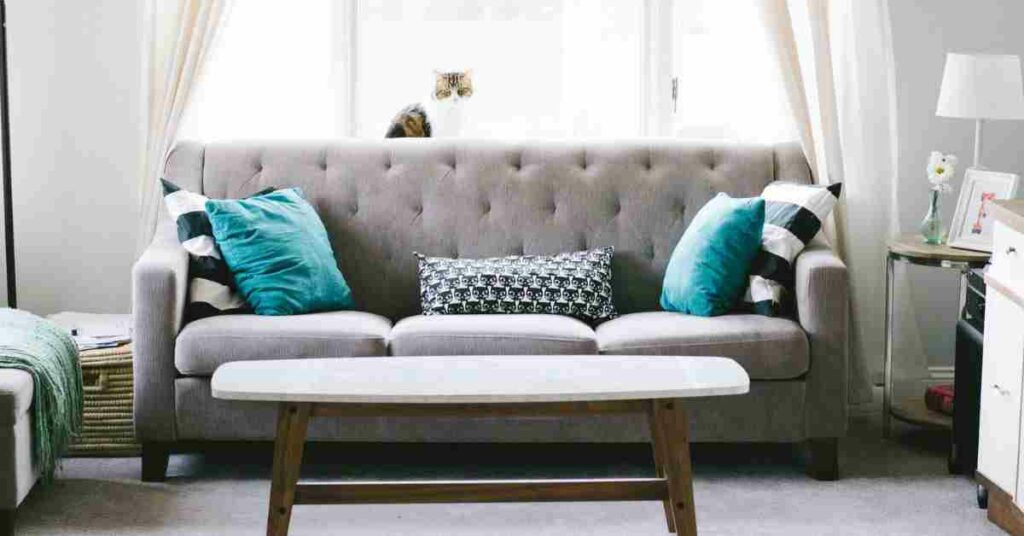Choosing the ideal recliner extends far beyond selecting an aesthetically pleasing seat. It’s about making sure it fits perfectly in your space. This guide will take you through a blog about How to Measure Recliner Size. It’ll discuss why this matters and give you straightforward steps for making the right choice.
Why Measure Recliner Size in Detail?
Measuring your recliner dimensions is important because it affects how well it fits into your living space and how comfy it’ll be. If the recliner is excessively large, it can create a cramped feeling in your room. However, if it is too small, it may appear slightly out of place. Ensuring the accurate measurement is like discovering the ideal puzzle piece for your room. It will contribute to the overall positive atmosphere.
Safety is another reason to measure. A big recliner might block your way, causing trips and bumps. And if it’s a wall hugging recliner, not having enough space could lead to crashes with the wall. Measuring also helps your recliner match your needs. Whether setting up a cozy reading spot or a family movie nook, knowing the size makes sure your recliner fits the plan. It helps you pick one that looks good with your style. So, taking a few minutes to measure is like giving your room a little love. By doing so, you make sure everything fits, feels right, and looks awesome.
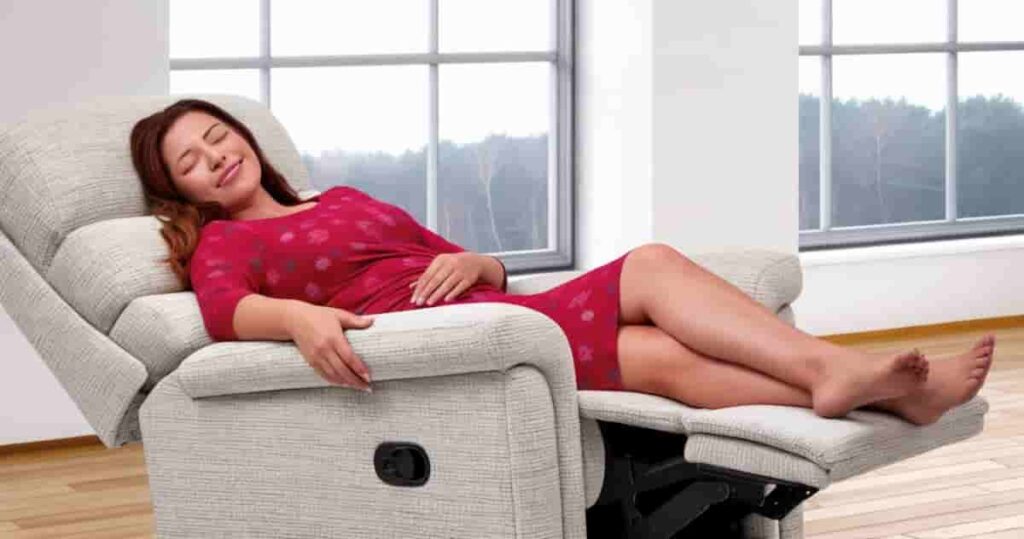
Step-by-Step Guide: How To Measure Recliner Size Against Buyer’s Body Size
The dimensions of a reclining chair have a significant impact on guaranteeing a pleasant and customized experience based on an individual’s physique. For larger individuals, a large recliner offers ample space. It accommodates their body proportions, giving optimal comfort and necessary support. On the other hand, small recliners are designed to suit more petite frames, offering a snug fit that enhances relaxation. When searching for the perfect recliner size, one must take into account the measurements of the seat, including its width, depth, and height.
1. Seat Dimensions
For seat width, measure from one armrest to the other. Seat depth is measured from the front edge of the seat to the back, and seat height is measured from the floor to the top of the seat cushion. Take these measurements at the most substantial points for a true representation. Use a measuring tape to determine the recliner’s length, width, and height. Extend the tape along the longest and widest points for precise measurements
Seat Width
- Purpose: Ensure the chair accommodates the user’s hip width.
- How to Measure: Measure the distance between the widest points on the buyer’s hips. Choose a recliner with a seat width equal to or slightly larger than this measurement to allow for comfortable seating without feeling constrained.
Seat Depth
- Purpose: Provide adequate leg support and avoid pressure points.
- How to Measure: Measure the length from the back of the buyer’s knees to the lower back. A suitable recliner should have a seat depth that accommodates this measurement, preventing the legs from hanging over the edge and ensuring proper support for the thighs.
Seat Height
- Purpose: Allow the buyer’s feet to rest comfortably on the floor.
- How to Measure: Measure the distance from the floor to the back of the buyer’s knees while seated. The ideal recliner seat height should allow the feet to touch the ground without causing discomfort.
2. Back Height
Measuring the back height of a recliner is a simple process that requires only a tape measure or ruler. Begin by placing the recliner on a stable surface in an upright and fully closed position. Identify the highest point on the back of the chair as your starting point. Using the tape measure or ruler, measure from the top of the seat cushion to the highest point on the backrest. This gives you an accurate idea of the recliner’s back support.
- Purpose: Provide proper head and neck support.
- How to Measure: Measure the distance from the base of the buyer’s neck to the lower back. Choose a recliner with a back height that supports the entire length of the buyer’s back, ensuring comfort and preventing strain.
3. Reclining Range
Measure how far the recliner extends when fully reclined. If there are additional features like extended footrests or adjustable headrests, measure their dimensions as well. Use the tape measure to assess how far the recliner extends when fully reclined.
- Purpose: Confirm that the recliner accommodates the buyer’s preferred reclining position.
- How to Measure: Consider the buyer’s preferred reclining angle and check if the recliner provides the desired range. Some people prefer a more upright position, while others may want a near-horizontal recline.
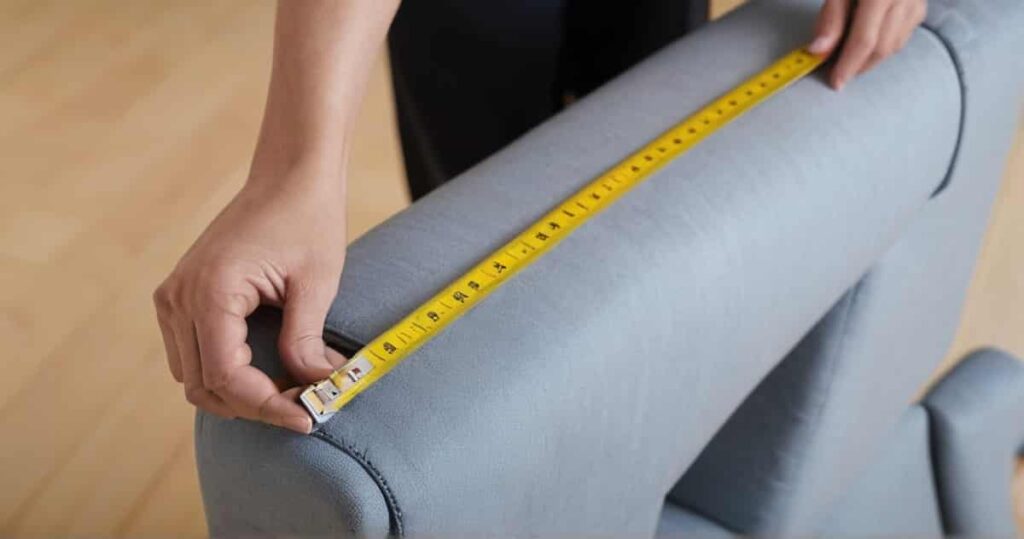
4. Armrest Dimensions
To measure armrest length, measure from the backrest to the front edge. For width, measure from the outer edge to the inner edge, and for height, measure from the lowest point to the highest point.
Armrest Height
- Purpose: Support the buyer’s arm height comfortably.
- How to Measure: Measure the distance from the floor to the top of the buyer’s arms while seated. Ensure the recliner’s armrests are at a height that allows the arms to rest comfortably without being too low or too high.
Armrest Width
- Purpose: Allow comfortable arm positioning.
- How to Measure: Measure the width of the buyer’s shoulders and ensure the recliner’s armrests are wide enough to provide adequate space for the arms without feeling cramped.
5. Lumbar Support
- Purpose: Maintain the natural curve of the lower back.
- How to Measure: Consider the curvature of the buyer’s lower back. Choose a recliner with built-in lumbar support that complements the natural curve of the spine, preventing discomfort or strain.
6. Footrest Extension
- Purpose: Provide sufficient leg support.
- How to Measure: If the recliner has an extending footrest, ensure it accommodates the length of the buyer’s legs when fully extended.
7. Clearance Space
- Purpose: Allow for unobstructed reclining.
- How to Measure: Consider the space around the recliner, ensuring enough clearance for the buyer to recline without hitting walls or other furniture.
Final Words
By carefully measuring these aspects against the buyer’s body size and preferences, you can select a recline chair that offers a perfect fit and optimal comfort. Always refer to the product specifications provided by the manufacturer for accurate dimensions and features. Ensure it aligns with the individual’s body dimensions. However, a standard size recliner offers versatility, and they cater to a broad range of body sizes. A recliner that is too large may lead to discomfort for smaller individuals. However, one that is too small might not provide enough support for larger individuals.
Related Articles:
The Best Recliner For Tall People In 2024 (7 Oversized Picks)
Top 7 Best Recliners For Short People In 2024
The Best Recliner For Heavy People In 2024 (7 Oversized Chairs)

